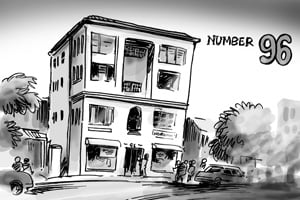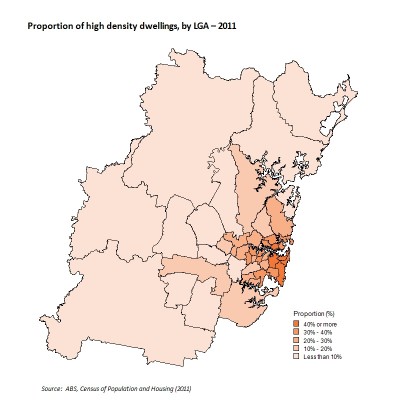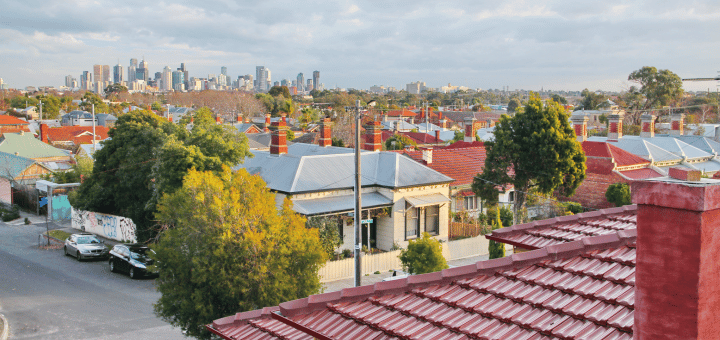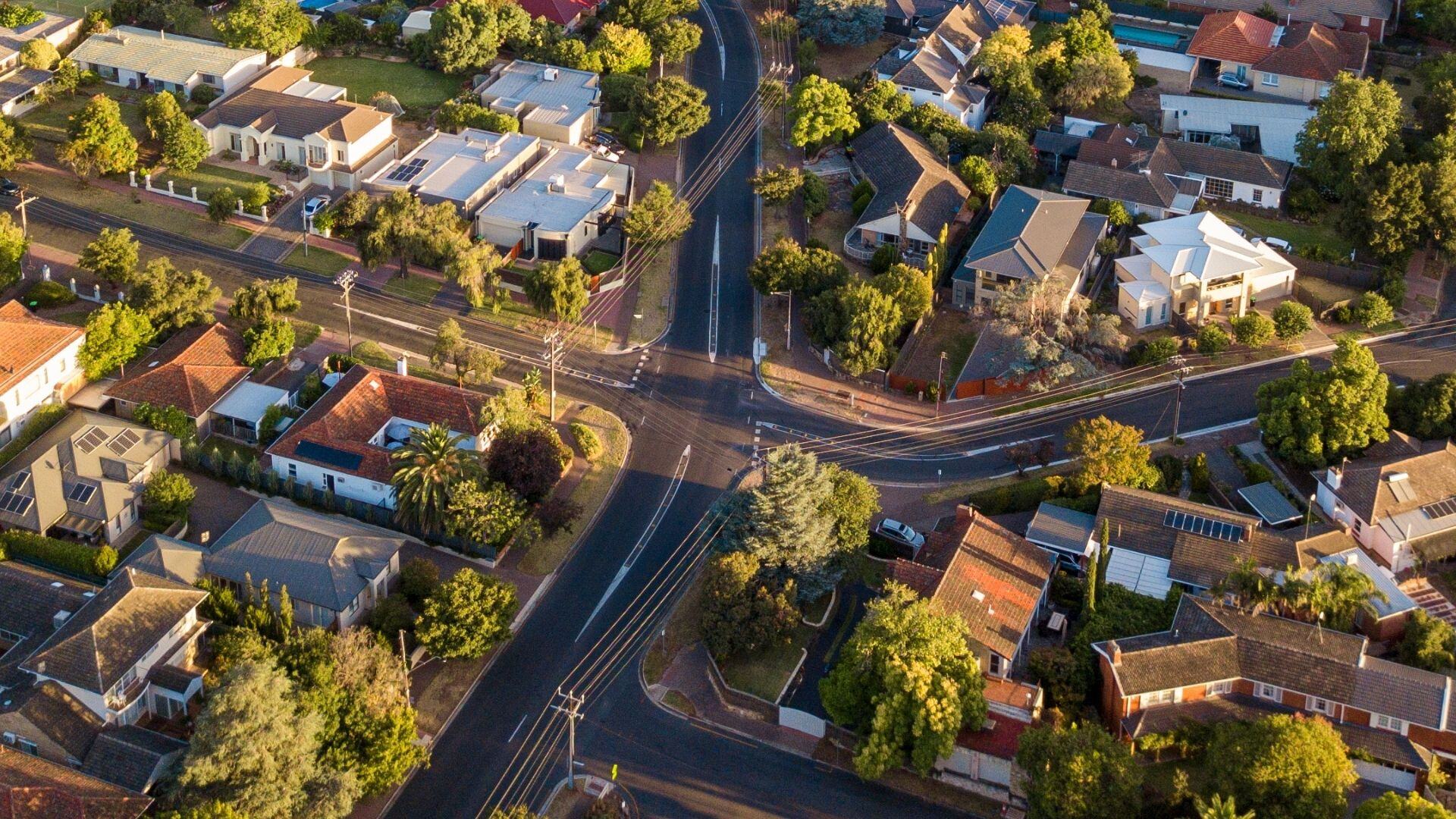One of the more visual aspects of urban and regional change in recent years has been the growth in construction of high rise apartments in the inner suburbs of Australian cities, particularly the CBD and surrounds. This phenomenon is most apparent in Sydney, Melbourne, Brisbane and Perth, where the city skylines have been altered drastically in the last two decades. Many people, particularly young professional adults and overseas students, are choosing these kinds of dwellings by choice – they offer advantages of location with excellent proximity to jobs, education and services. Though all state capital cities have metropolitan planning strategies which emphasise the need to contain urban sprawl and densify existing suburbs, it is Sydney that has embraced this concept on a greater scale and in different ways to other state capitals.
This blog uses housing and dwelling data from the 2011 Census to look at some of the issues.

Sydney is a dense city…
But it kind of always has been. Sydney embraced apartment living early on – a walk around the inner suburbs, especially those lining the harbour, contain many examples of apartment buildings dating back to the 1930s. The 1970s Australian soap opera, Number 96, was set in an inner city flat, unit or apartment building with three or more storeys (the definition .id uses for high density dwellings).
In 2011, 20.7% of dwellings in Sydney were classified as high density (one in five). This proportion has increased steadily since 1991, when 15.1% of dwellings fell into this category (one in seven). The map below (click for a larger version) shows the proportion of high density dwellings by LGA in the Sydney metropolitan area. Unsurprisingly, the highest proportions were found in those councils in the inner core, especially east of the CBD. This might seem like an obvious result, but sometimes even the obvious needs the data or map to establish the evidence base. The City of Sydney (70%) and North Sydney (61%) were the only councils in the metropolitan area where more than half the dwelling stock was high density, but Waverley (49%), Woollhara (47%) and Randwick (45%) also recorded high values. All of these LGAs are typical of inner Sydney areas with older apartments, but a quick glance at the skyline confirms that many more have been constructed in the last two decades.

High density extends beyond the inner core
A defining characteristic of Sydney’s housing scene is that high density living is not confined to the inner core, but extends a good 20km from the CBD, especially to the west. Sydney’s fastest growing LGAs include those which are located in the middle band of established western suburbs but are experiencing high levels of housing construction on strategic sites. These LGAs include Canada Bay, Auburn and Parramatta (the Parramatta Road corridor), all of which have seen large increases in their stock of high density dwellings over the last twenty years (see the graph below).
In 1991, Canada Bay and Parramatta had a similar proportion of high density dwellings compared to the Sydney metropolitan average, but Auburn’s was well below. In 2001, all three councils were at or above the metropolitan average (which had also increased). Fast forward to 2011 and the picture is very different to 1991. While Parramatta’s skyline has been transformed by the construction of high rise developments, the increase has been much faster in Canada Bay and Auburn.

A closer look at Auburn
In 1991 Auburn City Council was a typically low density suburban area where just 6% of the dwellings were classified as high density. Since that time Auburn has seen the construction of the village for the 2000 Olympics (since converted to private ownership) in Newington, as well as the redevelopment of strategic sites for housing, such as Botanic Ridge in Lidcombe South, and Wentworth Point. Construction of high rise apartments around railway stations has also shifted the balance of dwellings towards the high density end. In 2001, 18% of dwellings in Auburn were high density and by 2011 this proportion had risen to 28%. In terms of volume, the growth has been more pronounced, from 982 in 1991 to 6,849 in 2011 – a seven-fold increase.
The proportion of high density dwellings is likely to increase in Auburn in future years as there is considerable capacity for growth. Population forecasts prepared by .id have identified several sites in Wentworth Point and Sydney Olympic Park which will add to the stock and continue to influence the housing profile of the region. Areas like Auburn are virtually unique in the Australian urban context in that high density housing is being constructed well away from the city centre. Other examples do exist, but not to the extent evident in this part of Sydney.
Sydney’s outer suburbs are still low density
Despite all this construction of high rise apartments, the map above confirms that Sydney’s outer suburbs and peri-urban areas have very low proportions of high density dwellings. In this respect Sydney is very much like the other state capital cities. Wollondilly recorded the lowest proportion, with virtually no high density dwellings. Camden, Blue Mountains and Hawkesbury all recorded less than 1%. These outer LGAs have very different settlement patterns and housing markets to the established suburbs of Sydney. Camden is the fastest growing LGA in the Sydney metropolitan area, but its growth is driven by housing construction in greenfield estates that are popular with young families. This pattern is likely to continue into the future, as the NSW State government has identified several locations in fringe areas that are being investigated for development potential.
Access our online demographic resource centre for more population and demographic information about your area. You may also wish to subscribe to our blog or monthly newsletter to receive the latest updates about Australia’s ever-changing population and demography. Or visit our website to learn about about .id the population experts.














